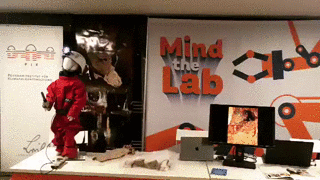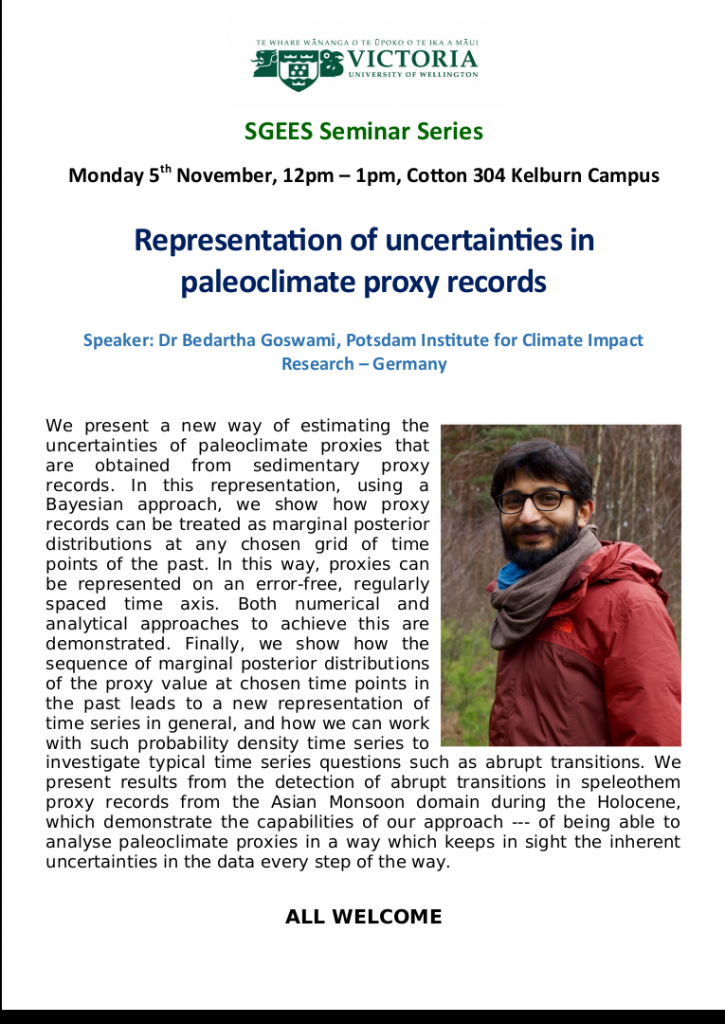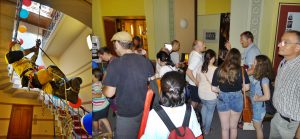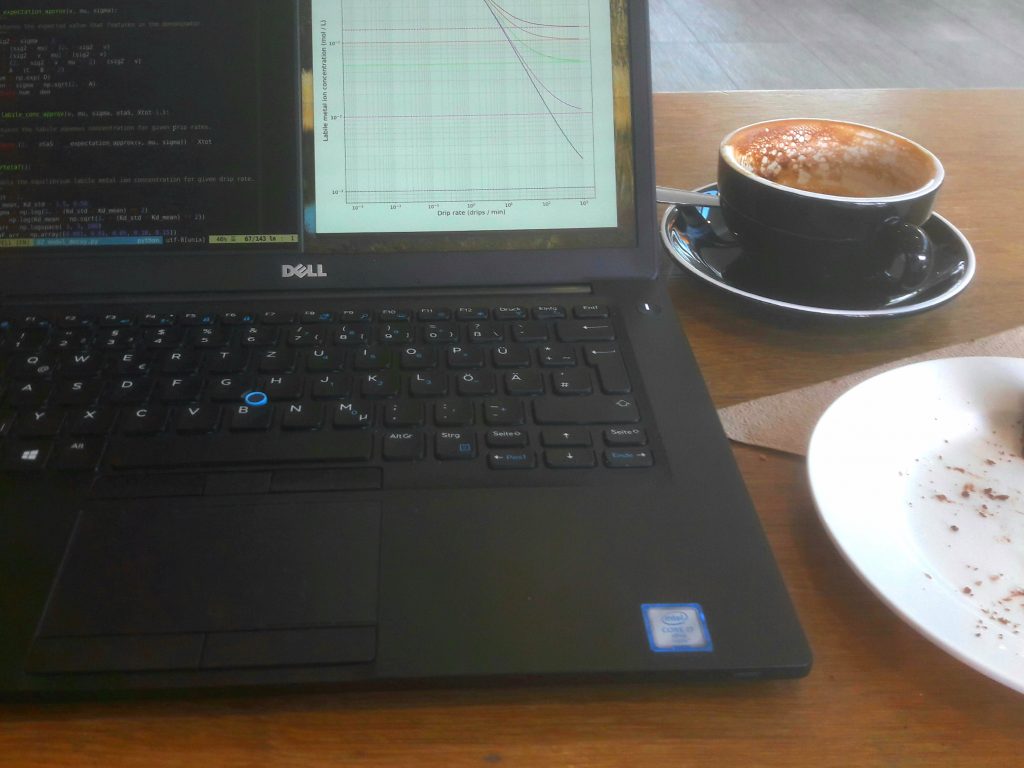
The excellent ‘flat white’ coffee of New Zealand is key for the success of the secondment.
By Bedartha Goswami
I arrived in Hamilton a month or so ago, around noon on 17 September. I met Adam at the University the next day and roughly speaking, a day later, on the 19th, we set out the approximate targets of my secondment: the estimation of the rates of dripping of cave drip water from speleothem measurements. Since then, Adam and I have tackled this problem from several angles. We discuss and then he sends me data sets and then I implement our ideas in code and then we discuss some more and we repeat this cycle. We make progress at times, and at times we get stuck. At all times though, we have managed to have intellectually stimulating conversations.
Adam also took me to the Waipuna cave on 26 September, which was an experience like I have never had before and has undoubtedly taken me a step closer to the topic of my codes. It has made me understand the minutiae of how drip waters form stalagmites better than before. (I will perhaps write my impressions of the Waipuna cave visit in another post). In general, my discussions with Adam have helped me get to know speleothems better, and also the processes involved in quantifying past climates using them.
Now, a few thoughts and impressions outside of work. This is my first trip to New Zealand, and I came here with a mind fairly bereft of preconceived notions. Only a rough idea of it being a paradise to almost everyone who talks about it, irrespective of whether they have actually been here before, or whether they are German or Indian. I have had an unforgettable stay thus far, and have encountered a warm and welcoming people who say “sweet man!” a lot. I’ve learnt to say “cheers ma’yt!” instead of “thanks” and have learnt to take a well made cup of ‘flat white’ coffee for granted. I’ve had Anzac biscuits and Afghan cookies and mince pies and am looking forward to try out Manuka honey some time before I leave.
Tramping around (‘tramping’ = ‘hiking’ in local Kiwi-speak) with local tramping clubs have taken me through intense bush trails in the back country, and offered up a stark contrast to not only the North American-frontier style layout of the towns but also to undulating lush green farmland – the hallmark of the quintessential New Zealand landscape. At one of the viewpoints, I asked the man leading the tramp: “So all these meadows, do you think they were all forests before humans?” “Of course”, came the reply, “Before, it was only bush and bird.”
I’ve learnt to identify some of the native birds (Tui and Kereru) and some of the native trees (cabbage tree, Nikau Palm, Manuka, Kanuka, Rimu, Rewa Rewa). Perhaps before I leave, I will get a chance to see the skeleton of the Moa bird — killed to extinction for food by the Maori. I witnessed discussions on predatory pests being taken care of with ‘1080P’ poison pellets so that the birds don’t go extinct. I see a land precariously holding on to its natural heritage, and passionately fighting for it. I have learnt to admire the efforts understaffed “doc” (Dept of Conservation). To me, this place seems to have successfully held time at bay, slowing down its forward stride so as to enjoy life and nature for a few moments more.
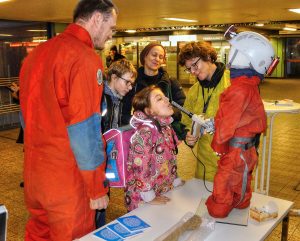 The QUEST team is always eager to engage the public – even if that means enduring the chilly winds of the Berlin Underground! MindTheLab – Science in the Metro (http://www.mindthelab.org) is a new communication approach that aims to connect scientists with the general public. After the first event in Athens, MindTheLab came to Berlin on the 8th of November and we (Norbert and Seb) participated in the event by setting up a booth at the U-Bahn station Möckernbrücke. Starting in the early afternoon, we talked to all interested people about climate research. We had many interesting encounters and highly engaging discussions. Although at times we felt like Jehovah’s witnesses trying to distribute leaflets, it was exciting to be able to discuss with people about climate change, climate impacts on society, and lack of political will to respond urgently to climate change. We received nearly 100% positive feedback, with many expressing their gratitude to climate scientists in general, and also for our active engagement at Möckernbrücke in particular. The only thing we missed were a few politicians to discuss with – but then again, who would expect them to travel with the Underground…?!
The QUEST team is always eager to engage the public – even if that means enduring the chilly winds of the Berlin Underground! MindTheLab – Science in the Metro (http://www.mindthelab.org) is a new communication approach that aims to connect scientists with the general public. After the first event in Athens, MindTheLab came to Berlin on the 8th of November and we (Norbert and Seb) participated in the event by setting up a booth at the U-Bahn station Möckernbrücke. Starting in the early afternoon, we talked to all interested people about climate research. We had many interesting encounters and highly engaging discussions. Although at times we felt like Jehovah’s witnesses trying to distribute leaflets, it was exciting to be able to discuss with people about climate change, climate impacts on society, and lack of political will to respond urgently to climate change. We received nearly 100% positive feedback, with many expressing their gratitude to climate scientists in general, and also for our active engagement at Möckernbrücke in particular. The only thing we missed were a few politicians to discuss with – but then again, who would expect them to travel with the Underground…?!